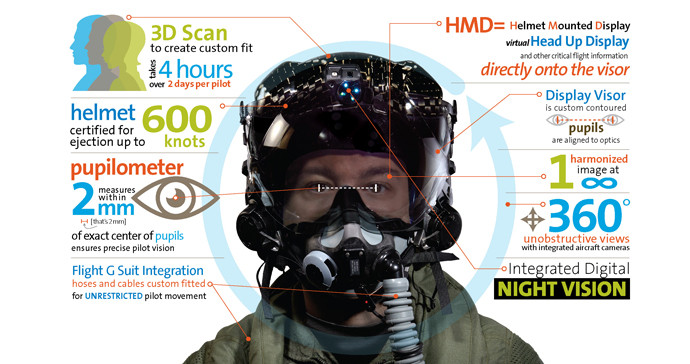F-35 fighter jet 'deadly' ejection seat flaw finally fixed after two years
Design issue with the F-35A left pilots at risk of fatal neck injury has been re-designed.
The next-generation F-35 fighter jet has moved closer to delivering on its promise of ushering in a new era of aerial warfare by finally fixing a potentially fatal flaw with its ejection seat system.
The F-35 Joint Strike Fighter, which the US and international militaries have been waiting for since it was announced in 2001, has seen its share of problems including one where F-35A pilots weighing less than 61kg (136 pounds) could be exposed to fatal neck injuries from the combination of the fast-deploying ejection seat and heavy, high-tech helmet.
In 2015 the US Air Force stopped pilots who did not meet the weight requirements from flying the jet with the original 2.3kg helmet described as stretching the necks of pilots as they ejected from the plane.
Now the seat has been redesigned and the weight of the helmet reduced, meaning pilots weighing between 46 and 111kg (103 and 245 pounds) can get airborne.
"The opening speed of the parachute and the cradling of the pilot's helmet with a head support panel have significantly improved the safety of the seat," Joe DellaVedova, F-35 Joint Program Office spokesman, told Military.com.
While three variants of the F-35 have been created to serve the Air Force (F-35A), Navy (F-35B) and Marines (F-35C), only the air force planes have been effected by the issue as each plane comes with different design tweaks for their respective ejection seat.

The new helmet, which has been designed by Rockwell Collins, has gone through three design iterations since first unveiled and is described as a "magic" helmet that allows pilots to 'see-through' planes thanks to sophisticated real-time camera technology. The cost for this original helmet was touted to be close to $400,000.
The process of retrofitting the US Air Force's fleet of 107 F-35As will progress at 14 per month and will be complete by January 2018.

As of February 2016, the F-35A was declared combat ready, however small setbacks such as the ejector seat problem and some software bugs have seen the craft stutter to take to the skies. Lockheed Martin and the US military will hope no further issues arise to heap further cost and delay on the project as President Trump watches on with scrutiny.
© Copyright IBTimes 2025. All rights reserved.





















